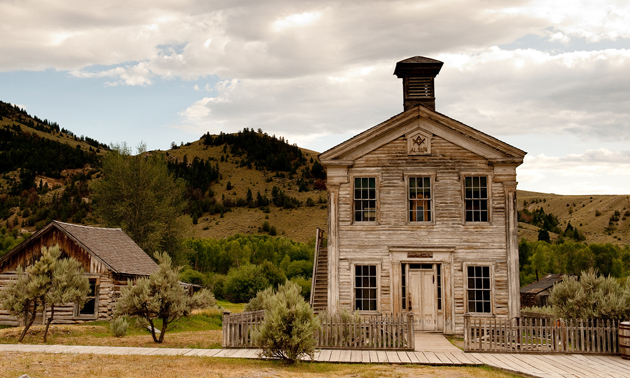Tour the ghost town of Bannack
Guided tours are available

To experience the spirit of southwest Montana, visit the preserved remains of one of the state's earliest communities at Bannack State Park.
A National Historic Landmark, the Bannack State Park ghost town is on the site of Montana’s first major gold discovery, which occurred on July 28, 1862. The strike set off a massive gold rush that swelled Bannack's population to over 3,000 by 1863.
According to park interpreter John Phillips, the park is where Montana begins.
“When the gold rush began in 1862, there was no such place as Montana,” said Phillips. “The gold rush created the drive to create the territory of Montana in 1864, and Bannack is where that gold rush began.”
Phillips said significant gold mining continued “well into the twentieth century,” at Bannack, but the town's population dwindled after the United States prohibited the mining of precious metals during the Second World War.
“The fact that the town was being used for so long is really why Bannack is so intact today,” he said, adding that you can see how people kept utilizing the same buildings over the years in the layers of wallpaper and linoleum, or “layers of life.”
“People continued to utilize the same buildings that we have here and that is one of the main reasons that the town is so well-preserved,” he said. “Then the state became involved here in 1954 with a donation of 19 or 20 buildings. Shortly thereafter they began to acquire and to work on the preservation of the town.”
Today, Bannack is considered one of the best-preserved ghost towns in Montana, with 60 buildings that visitors can tour. Other gold-rush-era artifacts have also been left intact, such as the sides of hydraulic mining in the hills and a twentieth century gold mill.
Phillips said visitors are able to take a self-guided tour of the town’s school, the first brick courthouse in Montana, original jails and gallows with a “well-developed tour book” that tells the stories of the gold rush and the Wild West culture that came with it.
“The story that most people know is the Wild West story of vigilantes hanging the sheriff here, Henry Plummer,” he said. “The sheriff was accused of being the mastermind of a criminal gang, or at least a facilitator of this gang, and as the town was really isolated from law enforcement or any form of government, vigilantes stepped in to enforce law and order.
“The story is a tremendous story,” he said. “Vigilantes hanged five men here in basically 48 hours, and it was part of a larger vigilante spree across southwest Montana.”
While gold mining is no longer the major local industry, Phillips said the town and its surrounding landscape are still very reminiscent of the days of the gold rush, and even before that, of the days of explorers Lewis and Clark.
“The landscape is virtually unchanged,” he said. “We are in a county of 5400 square miles with less than 10,000 people living in it. The country is still high desert country, with high sage brush and semi-arid.
“There is really a theme of the American West, where these communities really struggled to survive,” he said. “Bannack represents a number of things: the gold rush, the beginnings of Montana, and a town’s struggle to survive.”
Bannack State Park is located at 721 Bannack Road in Dillon, Montana. The park is open all year round from 8 a.m. to 5 p.m. fall to spring and 8 a.m. to 9 p.m. in the summer. In addition to self-guided tours, scheduled tours of the ghost town are conducted from the visitor center, which is open from Memorial Day through Labour Day. Gold panning, fishing, hiking, mountain biking, camping and more are also offered at the park, which spans nearly 1600 acres.
For more information visit www.bannack.org






